News
Sheridan Le Fanu’s ‘Carmilla’ and the Birth of the Predatory Lesbian Vampire
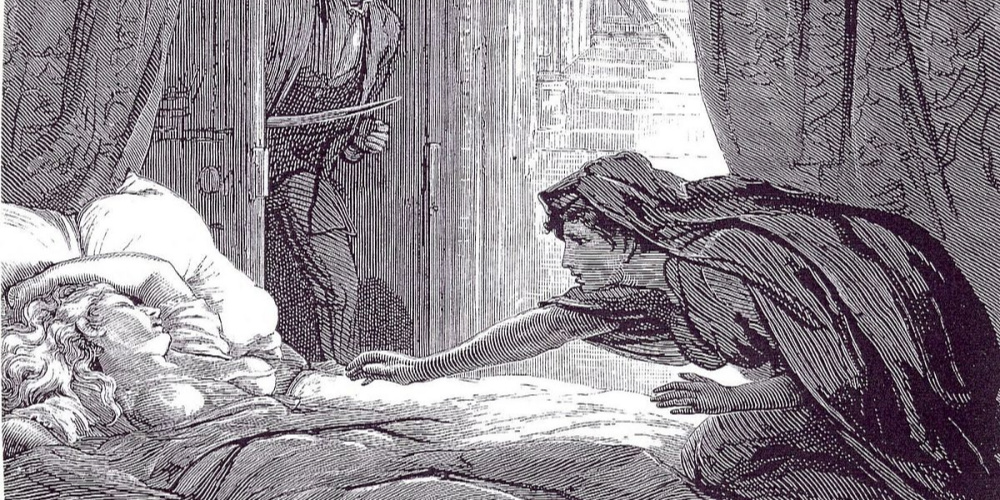
In 1872, Irish author Sheridan Le Fanu published Carmilla, a novella in serial form that would reshape the vampire fiction subgenre for all time. The tale of a young woman under siege by a beautiful and sensual female vampire sparked the imaginations of his readers then and would eventually become one of the most adapted novellas of all time, taking its place next to other queer classics including The Picture of Dorian Gray and Dracula both of which it predates.
The Life of Sheridan Le Fanu
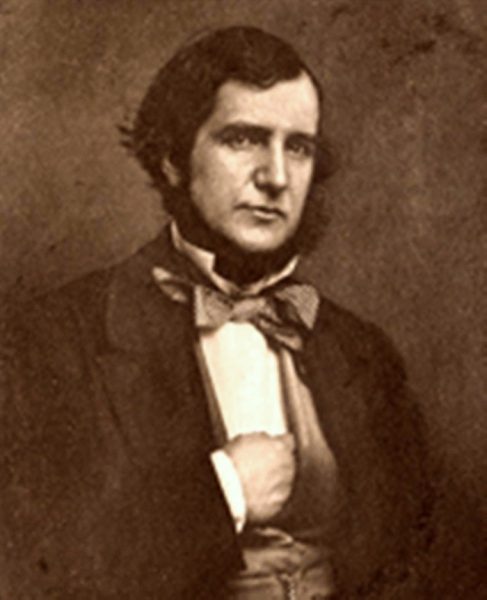
Sheridan Le Fanu
James Thomas Sheridan Le Fanu was born into a literary family on August 28, 1814. His father, Thomas Philip Le Fanu was a Church of Ireland clergyman and his mother Emma Lucretia Dobbin was a writer whose most famous work was a biography of Dr. Charles Orpen, an Irish doctor and clergyman who founded the Claremont Institution for the Deaf and Dumb in Glasnevin, Dublin.
Le Fanu’s grandmother, Alicia Sheridan Le Fanu, and his great-uncle Richard Brinsley Butler Sheridan were both playwrights and his niece Rhoda Broughton became a successful novelist.
In his early adult life, Le Fanu studied law at Trinity College in Dublin but never actually practiced the profession, leaving it behind to move into journalism instead. He would go on to own several newspapers in his life including the Dublin Evening Mail which delivered evening newspapers for almost 140 years.
It was during this time that Sheridan Le Fanu began building his reputation as a writer of Gothic fiction beginning with “The Ghost and the Bone-Setter” which was first published in 1838 in the Dublin University Magazine and became part of his future collection The Purcell Papers, a collection of stories all reportedly taken from the private writings of a parish priest named Father Purcell.
In 1844, Le Fanu married Susanna Bennett and the couple would have four children together. Susanna suffered from “hysteria” and “neurotic symptoms” which worsened over time and in 1858, she died after a “hysterical attack.” Le Fanu did not write a single story for three years following the death of Susanna. In fact, he did not pick up his pen to write anything other than personal correspondence again until after the death of his mother in 1861.
From 1861 until his death in 1873, however, Le Fanu’s writing became prolific. He published multiple stories, collections and novellas including Carmilla, first published as a serial and then in his collection of stories titled In a Glass Darkly.
Carmilla

By Michael Fitzgerald (fl. 1871 – 1891) – Haunted Images: The Illustrating of Le Fanu at jslefanu.com, Public Domain
Presented as a case study by Dr. Hesselius, a sort of occult detective, the novella is narrated by a beautiful young woman named Laura who lives with her father in solitary castle in southern Austria.
As a child, Laura has a vision of a woman who visited her in her private chambers and claims to have been pierced in the breast by the woman, though no wound is ever found.
Flash forward twelve years later, Laura and her father are still quite happy when a strange and beautiful young woman named Carmilla arrives at their door after a carriage accident. There is a moment of instant recognition between Laura and Carmilla. They seem to remember each other from dreams they had as children.
Carmilla’s “mother” arranges for the young woman to stay with Laura and her father at the castle until she can be retrieved and soon the two have become the best of friends despite the former’s peculiarities. Carmilla steadfastly refuses to join the family in prayers, sleeps through much of the day, and sometimes seems to sleepwalk at night. She also makes romantic advances toward Laura from time to time.
Meanwhile, in the nearby village, young women begin dying of a strange inexplicable illness. As the death count rises, so does fear and hysteria in the village.
A shipment of paintings arrives at the castle, and among them is a painting of Mircalla, Countess Karnstein, an ancestor of Laura’s who is identical to Carmilla.
Laura begins to have nightmares about a strange feline beast that enters her room at night and attacks her, piercing her breast with its teeth before taking on the form of a beautiful woman and disappearing out the window.
Laura’s health soon begins to decline and after a doctor discovers a small puncture wound on her breast, her father is instructed not to leave her alone.
The story progresses from there as so many do. It is discovered that Carmilla and Mircalla are one and the same and she is soon dispatched by having her head removed after which they burn her body and throw her ashes into a river.
Laura never fully recovers from her ordeal.
Carmilla‘s Underlying and Not So Underlying Lesbian Themes
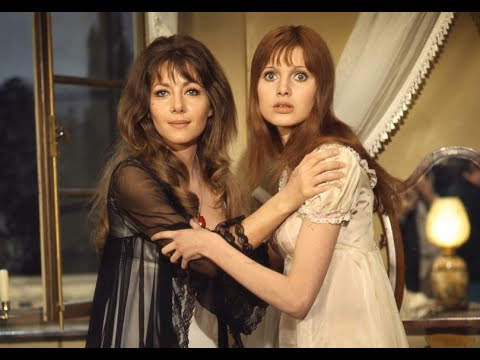
A scene from The Vampire Lovers, an adaptation of Carmilla
From almost their first meeting, there is an attraction between Laura and Carmilla that has sparked much debate, especially among modern scholars in queer theory.
On the one hand, there is an undeniable seduction happening within the 108 or so pages of the story. At the same time, however, it is hard not to read that seduction as predatory considering that Carmilla’s ultimate goal is to steal Laura’s life.
Le Fanu, himself, left the story very vague. The advances and seduction, really anything that pointed toward a lesbian relationship between the two, appears as very subtle subtext. This was absolutely necessary at the time and one has to wonder if the man had written the novel even 30 years later how differently the story might have been written.
Nonetheless, Carmilla became the blueprint for the lesbian vampire character which would become a dominant theme in literature and in film in the 20th century.
She only preys on women and girls. She develops close personal relationship with some of her female victims with an undeniable erotic and romantic edge to those relationships.
Further, her animal form was a large black cat, a recognizable literary symbol of witchcraft, magic, and female sexuality.
When all of these themes are taken together, Carmilla/Mircalla becomes a blatant lesbian character with the social and sexual mores of 19th century thrust upon her including the maxim that she should die in the end.
Carmilla’s Legacy
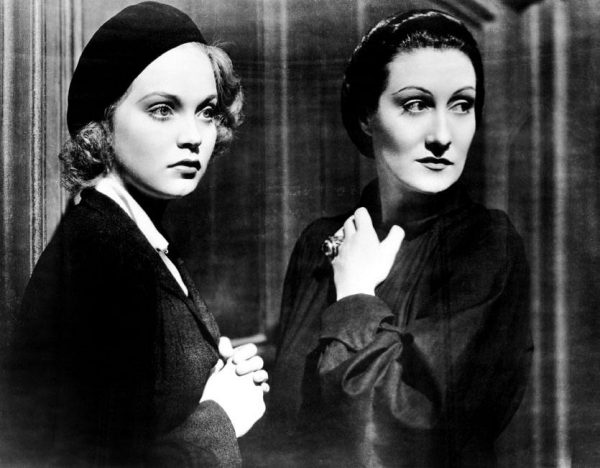
A still from Dracula’s Daughter
Carmilla might not have been the vampire story everyone was talking about as the 19th century ended, but it had left an indelible mark on genre fiction and by the early 20th century as film became a more popular medium, it was ripe for adaptation.
I won’t go into all of them–there are a lot–but I do want to hit a few highlights, and point out how the character’s story was handled.
One of the earliest examples of this came in 1936’s Dracula’s Daughter. A sequel to 1931’s Dracula, the film starred Gloria Holden as Countess Marya Zaleska and drew heavily upon Carmilla‘s themes of the predatory lesbian vampire. By the time the film was made, the Hays Code was firmly in place which made the novella a rather perfect choice for source material.
Interestingly, the Countess struggles in the film to find a way to rid herself of her “unnatural desires” but ultimately gives in time and again, choosing beautiful women as her victims including Lili, a young woman brought to the Countess under the deceptive premise of modeling.
Naturally, Marya is destroyed at the end of the film after being shot through the heart with a wooden arrow.
Later on in 1972, Hammer Horror produced a very faithful adaptation of the story titled The Vampire Lovers, this time with Ingrid Pitt in the leading role. Hammer pulled out all the stops, heightening the erotic nature of the story and relationship between Carmilla and her victim/lover. The film was part of the Karnstein trilogy which expanded upon the mythos of Le Fanu’s original story and brought the lesbian subtext to the foreground.
Carmilla made the leap into anime in 2000’s Vampire Hunter D: Bloodlust which features the archetypal vampire as the central protagonist. She has, at the beginning of the story, been destroyed by Dracula, himself, but her spirit lives on and attempts to bring about her own resurrection through the use of virgin blood.
It wasn’t only filmmakers who found their inspiration in the story, however.
In 1991, Aircel Comics released a six-issue, black and whit, highly erotic adaptation of the story titled Carmilla.
Award-winning author Theodora Goss flipped the script on the narrative of the original story in her novel European Travel for the Monstrous Gentlewoman. The novel was the second in a series of books titled The Extraordinary Adventures of the Athena Club which focuses on the children of some of literature’s most famous “mad scientists” fighting the good fight and protecting each other from the demented Professor Abraham Van Helsing and his machinations.
In the novel, the Athena Club finds Carmilla and Laura living a rather happy life together and the two eventually aid the club in their adventure and it was honestly a breath of fresh air to the novella’s legacy.
The Vampire and the LGBTQ Community
I do not know for a fact that Sheridan Le Fanu set out to intentionally paint lesbians as predatory and evil, but I do think that he was working from the social ideas of his time and reading his story gives us a rather pointed insight into what the Irish society thought of the “other.”
For a woman to be less than feminine, to take on a role of power, and to not concern herself with family and child-bearing was not unheard of in Ireland at the time, but it was still frowned upon in many social circles. These women were looked upon with a certain amount of distrust, certainly, but when Le Fanu took those views a step further by turning them to monsters, it took on a different light entirely.
I have often wondered if Carmilla wasn’t written in direct response to his wife’s death in some way. Could it be that her descent into “fits of hysteria” as they were called at the time and her clinging to religion as her health deteriorated inspired the character of Laura?
Regardless of his original intentions, Sheridan Le Fanu inextricably tied lesbians to predatory genre monsters and those ideas carried forward in both negative and positive ways through the 20th and into the 21st century.
Books, movies, and art in general inform ideas. They are both reflections and catalysts within society, and this trope endures for a reason. Sexualizing and inserting the predatory narrative detracts from the possibility of positive healthy relationships between two women and reduces them to purely physical connections.
He was hardly the first and far from the last who painted a picture of the sexually fluid vampire. Anne Rice has made a fortune writing exquisite novels filled with them. In Rice’s novels, however, it is never that sexuality that makes one a “good” or “bad” vampire. Instead, it is the content of their character and how they treat their fellows.
Despite all of this, I still recommend reading the novella. Carmilla is a fascinating story and window into our community’s past.
Listen to the 'Eye On Horror Podcast'

Movies
New ‘MaXXXine’ Image is Pure 80s Costume Core
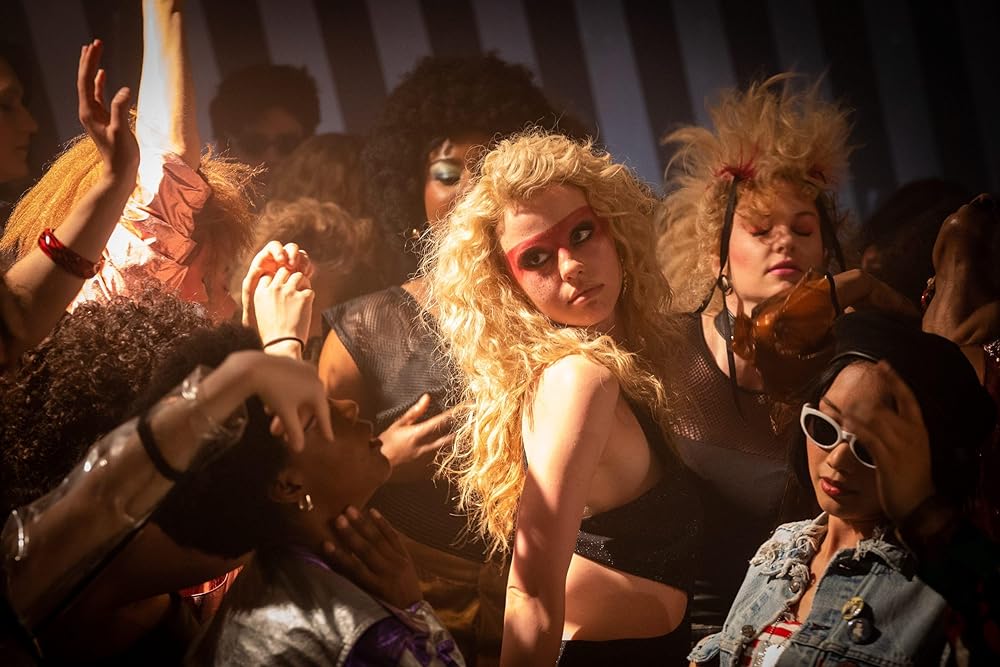
A24 has unveiled a captivating new image of Mia Goth in her role as the titular character in “MaXXXine”. This release comes approximately a year and a half after the previous installment in Ti West’s expansive horror saga, which covers more than seven decades.
His latest continues the story arc of freckle-faced aspiring starlet Maxine Minx from the first film X which took place in Texas in 1979. With stars in her eyes and blood on her hands, Maxine moves into a new decade and a new city, Hollywood, in pursuit of an acting career, “But as a mysterious killer stalks the starlets of Hollywood, a trail of blood threatens to reveal her sinister past.”
The photo below is the latest snapshot released from the film and shows Maxine in full Thunderdome drag amid a crowd of teased hair and rebellious 80s fashion.
MaXXXine is set to open in theaters on July 5.

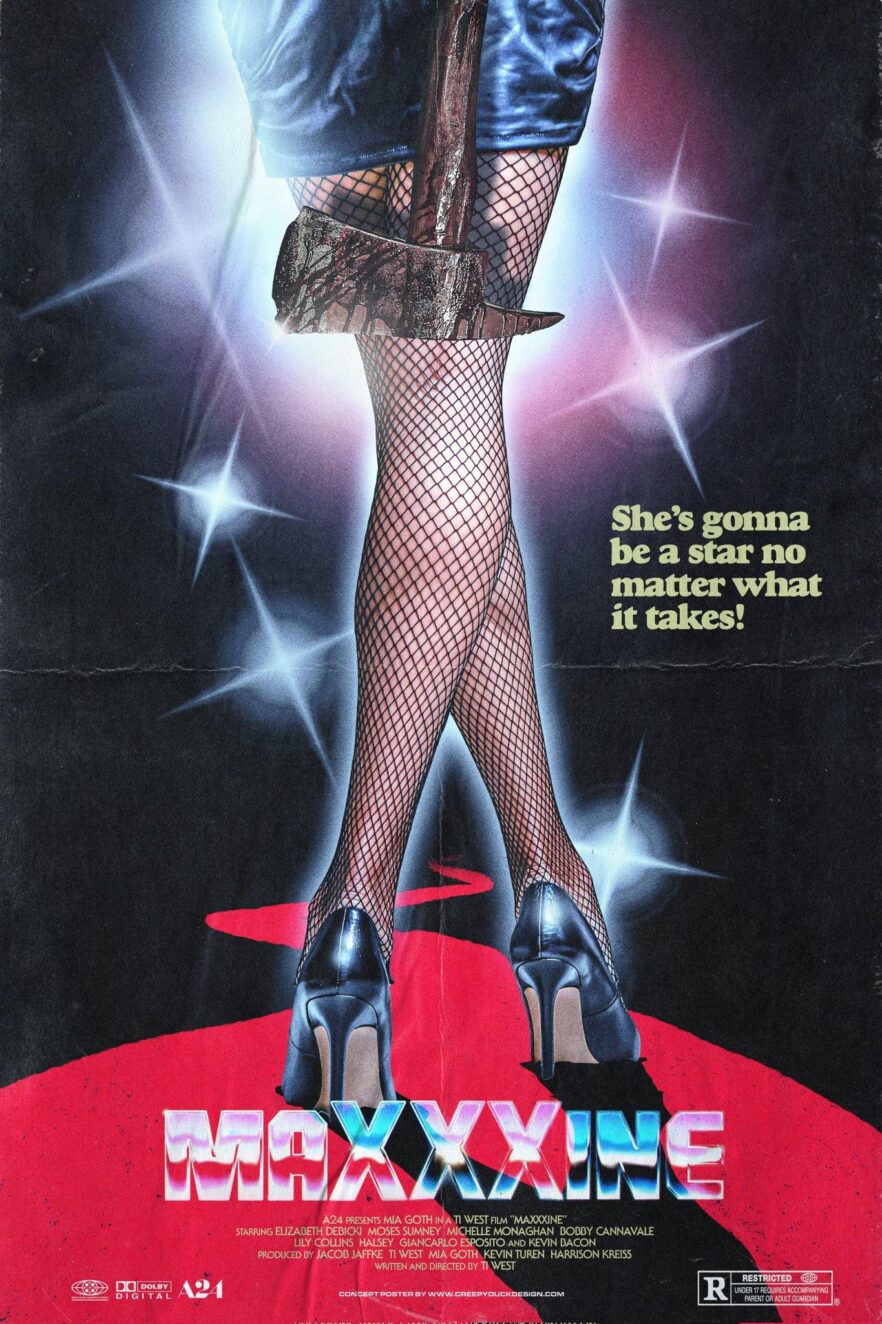
Listen to the 'Eye On Horror Podcast'
News
Netflix Releases First BTS ‘Fear Street: Prom Queen’ Footage

It’s been three long years since Netflix unleashed the bloody, but enjoyable Fear Street on its platform. Released in a tryptic fashion, the streamer broke up the story into three episodes, each taking place in a different decade which by the finale were all tied together.
Now, the streamer is in production for its sequel Fear Street: Prom Queen which brings the story into the 80s. Netflix gives a synopsis of what to expect from Prom Queen on their blog site Tudum:
“Welcome back to Shadyside. In this next installment of the blood-soaked Fear Street franchise, prom season at Shadyside High is underway and the school’s wolfpack of It Girls is busy with its usual sweet and vicious campaigns for the crown. But when a gutsy outsider is unexpectedly nominated to the court, and the other girls start mysteriously disappearing, the class of ’88 is suddenly in for one hell of a prom night.”
Based on R.L. Stine’s massive series of Fear Street novels and spin-offs, this chapter is number 15 in the series and was published in 1992.
FEAR STREET: PROM QUEEN IS NOW IN PRODUCTION 🩸 Welcome to Shadyside High. We're gonna have a killer time. pic.twitter.com/jDl0zRa2CH
— Netflix (@netflix) April 30, 2024
Fear Street: Prom Queen features a killer ensemble cast, including India Fowler (The Nevers, Insomnia), Suzanna Son (Red Rocket, The Idol), Fina Strazza (Paper Girls, Above the Shadows), David Iacono (The Summer I Turned Pretty, Cinnamon), Ella Rubin (The Idea of You), Chris Klein (Sweet Magnolias, American Pie), Lili Taylor (Outer Range, Manhunt) and Katherine Waterston (The End We Start From, Perry Mason).

No word on when Netflix will drop the series into its catalog.
Listen to the 'Eye On Horror Podcast'
News
Live Action Scooby-Doo Reboot Series In Works at Netflix

The ghosthunting Great Dane with an anxiety problem, Scooby-Doo, is getting a reboot and Netflix is picking up the tab. Variety is reporting that the iconic show is becoming an hour-long series for the streamer although no details have been confirmed. In fact, Netflix execs declined to comment.

If the project is a go, this would be the first live-action movie based on the Hanna-Barbera cartoon since 2018’s Daphne & Velma. Before that, there were two theatrical live-action movies, Scooby-Doo (2002) and Scooby-Doo 2: Monsters Unleashed (2004), then two sequels that premiered on The Cartoon Network.
Currently, the adult-oriented Velma is streaming on Max.
Scooby-Doo originated in 1969 under the creative team Hanna-Barbera. The cartoon follows a group of teenagers who investigate supernatural happenings. Known as Mystery Inc., the crew consists of Fred Jones, Daphne Blake, Velma Dinkley, and Shaggy Rogers, and his best friend, a talking dog named Scooby-Doo.

Normally the episodes revealed the hauntings they encountered were hoaxes developed by land-owners or other nefarious characters hoping to scare people away from their properties. The original TV series named Scooby-Doo, Where Are You! ran from 1969 to 1986. It was so successful that movie stars and pop culture icons would make guest appearances as themselves in the series.
Celebrities such as Sonny & Cher, KISS, Don Knotts, and The Harlem Globetrotters made cameos as did Vincent Price who portrayed Vincent Van Ghoul in a few episodes.
Listen to the 'Eye On Horror Podcast'
-
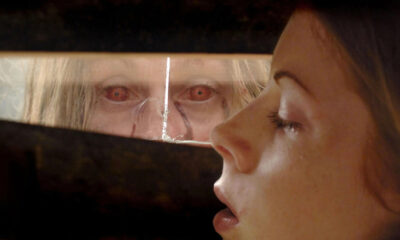
 Movies6 days ago
Movies6 days ago’28 Years Later’ Trilogy Taking Shape With Serious Star Power
-
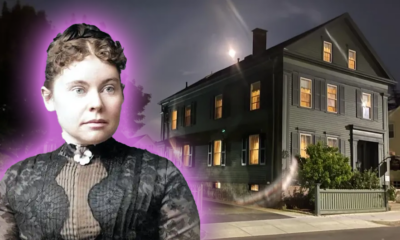
 News6 days ago
News6 days agoWin a Stay at The Lizzie Borden House From Spirit Halloween
-

 News7 days ago
News7 days agoWatch ‘The Burning’ At The Location Where It Was Filmed
-
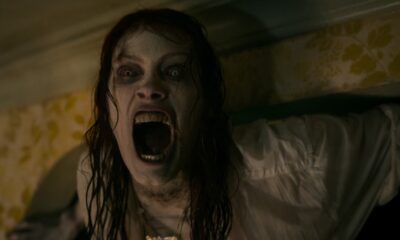
 Movies5 days ago
Movies5 days ago‘Evil Dead’ Film Franchise Getting TWO New Installments
-

 Movies6 days ago
Movies6 days agoTrailer for ‘The Exorcism’ Has Russell Crowe Possessed
-

 News5 days ago
News5 days agoJake Gyllenhaal’s Thriller ‘Presumed Innocent’ Series Gets Early Release Date
-
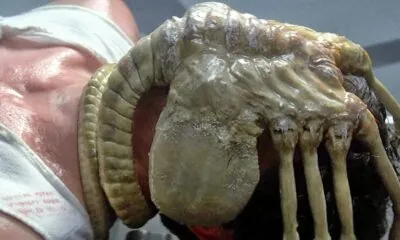
 Movies5 days ago
Movies5 days agoFede Alvarez Teases ‘Alien: Romulus’ With RC Facehugger
-
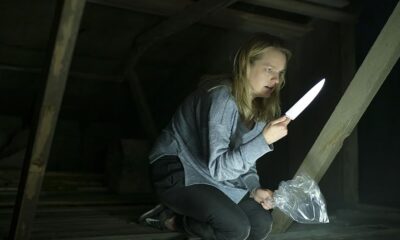
 Movies5 days ago
Movies5 days ago‘Invisible Man 2’ Is “Closer Than Its Ever Been” to Happening
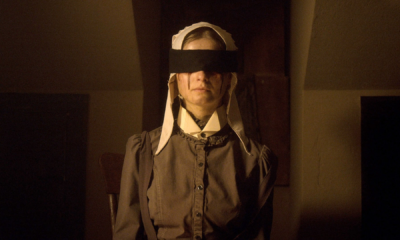

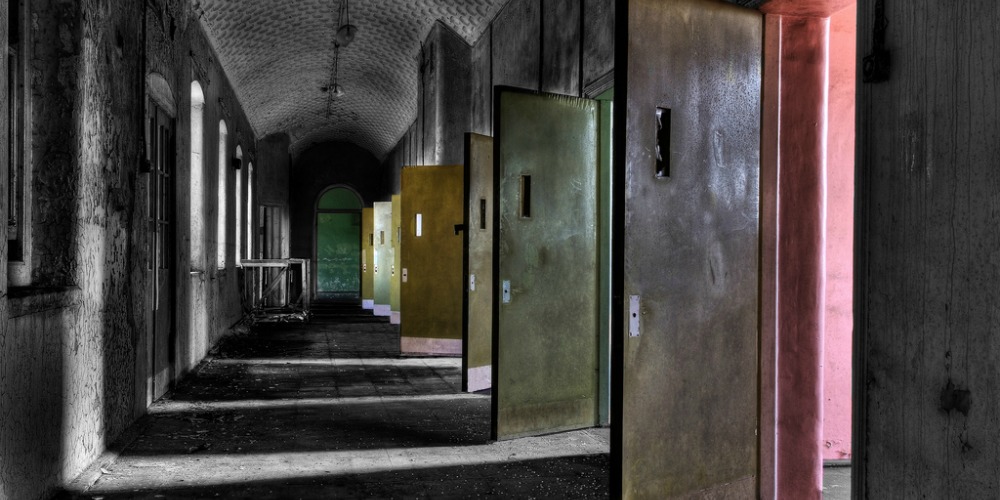




















You must be logged in to post a comment Login